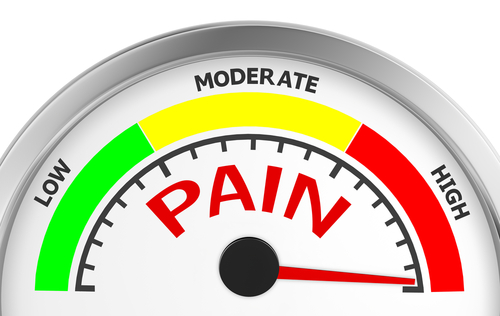Pain is a common symptom among patients with Gaucher disease (GD). Italian researchers say it’s caused by peripheral nerve cell damage and not only bone damage, as was previously thought.
Their study, “Chronic pain in Gaucher disease: skeletal or neuropathic origin?,” appeared in the Orphanet Journal of Rare Diseases.
Based on the central nervous system’s role in GD, patients can be classified as GD type 1 (the non-neuropathic form), GD type 2 (the acute and early fatal neuropathic form), and GD type 3 (the chronic late-onset neurological form).
This classification can help define disease progression and prognosis. However, GD patients have a continuum of symptoms, with previous reports describing a high prevalence of peripheral nerve damage in GD1 patients.
Most of these patients are in pain, though their pain usually responds well to enzyme replacement therapy (ERT). However, the pain seems to come back after upon long-term ERT regimens without a clear explanation. Overall, pain and its origin in GD1 patients has been poorly studied.
To shed light on this matter, a researcher team at Italy’s AMC Hospital in Udine analyzed pain symptoms in 22 GD1 patients who had received Ceredase (alglucerase)/Cerezyme (imiglucerase) therapy or substrate reduction therapy (SRT) with Zavesca (miglustat) for an average 15 years, and three GD1 patients who had not received any treatment.
Led by Bruno Bembi, director of the hospital’s Regional Coordination Center for Rare Diseases, the team found that, contrary to common belief, pain in GD1 patients derives from damaged peripheral nerves as well as skeletal or bone damage.
The team observed that ERT regimens were able to control bone involvement and pain in nine of the 13 patients who were receiving it and who had reported pain symptoms. However, most patients had progressive pain symptoms during ERT. This observation supported a neuropathic origin for GD1 pain.
Analysis of skin biopsies confirmed that 19 patients had lost nerve cells on their skin. This denervation was a common feature of both symptomatic and asymptomatic patients. The three patients who had not received treatment also had skin denervation, which allowed the researchers to exclude any correlation with therapies.
“The presence of SFN [small nerve fibers] in asymptomatic patients, strongly suggests a constitutive role of peripheral neuropathy in GD,” the researchers wrote, urging further studies to identify the underlying mechanism of nerve-cell degeneration and death in GD and its association with glucosyceramide accumulation — the main feature of this rare condition.
“[These results] further confirm the existence of a continuum Gaucher phenotype, and provide a new interpretation of pain origin that should be considered for an appropriate disease management and to avoid unnecessary dose escalations of enzyme therapy,” authors wrote.


